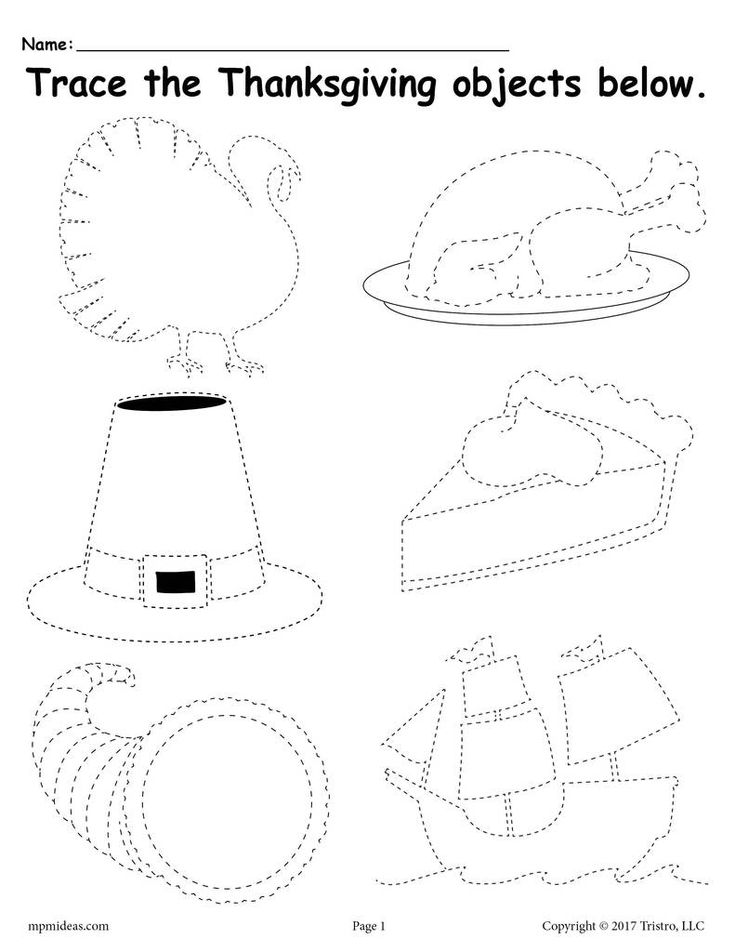Thanksgiving preschool story: A Children’s Thanksgiving story – The First Thanksgiving
A Children’s Thanksgiving story – The First Thanksgiving
by Nora Smith
Nearly four hundred years ago, a great
many of the people in England
were very unhappy because their king would not let them
pray to God as
they liked. The king said they must use the same prayers
that he did;
and if they would not do this, they were often thrown into
prison, or
perhaps driven away from home.
“Let us go away from this country,” said
the unhappy Englishmen to
each other; and so they left their homes, and went far
off to a
country called Holland. It was about this time that they
began to call
themselves “Pilgrims. ” Pilgrims, you know, are
people who are always
traveling to find something they love, or to find a land
where they
can be happier; and these English men and women were journeying,
they
said, “from place to place, toward heaven, their dearest
country.”
In Holland, the Pilgrims were quiet
and happy for a while, but they
were very poor; and when the children began to grow up,
they were not
like English children, but talked Dutch, like the little
ones of Holland, and some grew naughty and did not want
to go to church any
more.
“This will never do,” said
the Pilgrim fathers and mothers; so after
much talking and thinking and writing they made up their
minds to come
here to America.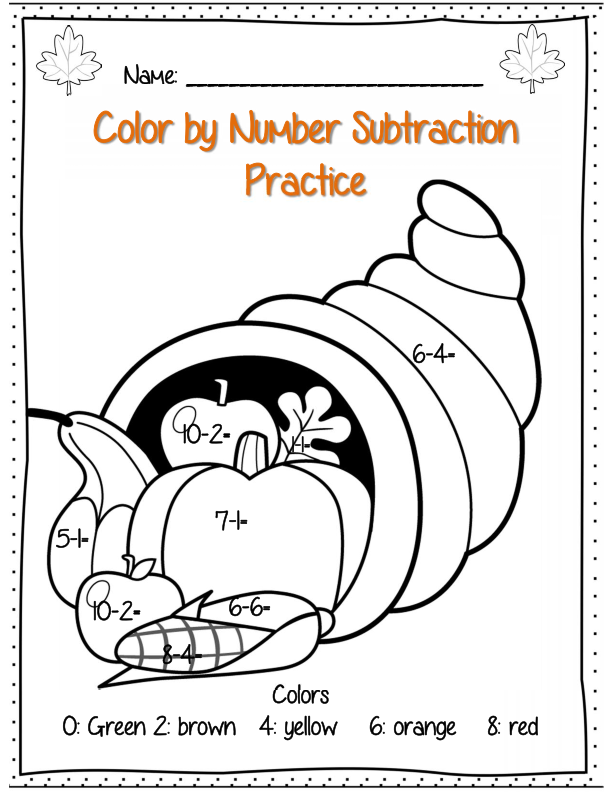
and the
Speedwell, to take them across the sea; but the Speedwell
was not a
strong ship, and the captain had to take her home again
before she had
gone very far.
The Mayflower went back, too. Part of the Speedwell’s
passengers were
given to her, and then she started alone across the great
ocean.
There were one hundred people on board
– mothers and fathers, brothers
and sisters and little children. They were very crowded;
it was cold
and uncomfortable; the sea was rough, and pitched the Mayflower
about,
and they were two months sailing over the water.
The children cried many times on the journey, and wished
they had
never come on the tiresome ship that rocked them so hard,
and would
not let them keep still a minute.
But they had one pretty plaything to amuse them, for in
the middle of
the great ocean a Pilgrim baby was born, and they called
him
“Oceanus,” for his birthplace. When the children
grew so tired that
they were cross and fretful, Oceanus’ mother let them come
and play
with him, and that always brought smiles and happy faces
back again.
At last the Mayflower came in sight of land; but if the
children had
been thinking of grass and flowers and birds, they must
have been very
much disappointed, for the month was cold November, and
there was
nothing to be seen but rocks and sand and hard bare ground.
Some of the Pilgrim fathers, with brave Captain Myles
Standish at
their head, went on shore to see if they could find any
houses or
white people. But they only saw some Indians, who
ran away from
them, and found some Indian huts and some corn buried in
holes in the
ground. They went to and fro from the ship three times,
till by and by
they found a pretty place to live, where there were “fields
and little
running brooks.”
Then at last all the tired Pilgrims landed from the ship
on a spot now
called Plymouth Rock, and the first house was begun on
Christmas Day.
But when I tell you how sick they were and how much they
suffered that
first winter, you will be very sad and sorry for them.
The weather was
cold, the snow fell fast and thick, the wind was icy, and
the Pilgrim
fathers had no one to help them cut down the trees and
build their
church and their houses.
The Pilgrim mothers helped all they could; but they were
tired with
the long journey, and cold, and hungry too, for no one
had the right
kind of food to eat, nor even enough of it.
So first one was taken sick, and then another, till half
of them were
in bed at the same time, Brave Myles Standish and the other
soldiers
nursed them as well as they knew how; but before spring
came half of
the people died and had gone at last to “heaven, their
dearest
country.
But by and by the sun shone more brightly, the snow melted,
the leaves
began to grow, and sweet spring had come again.
Some friendly Indians had visited the Pilgrims during
the winter, and
Captain Myles Standish, with several of his men, had returned
the
visit.
One of the kind Indians was called Squanto, and he came
to stay with
the Pilgrims, and showed them how to plant their corn,
and their pease
and wheat and barley.
When the summer came and the days were long and bright,
the Pilgrim
children were very happy, and they thought Plymouth a lovely
place
indeed.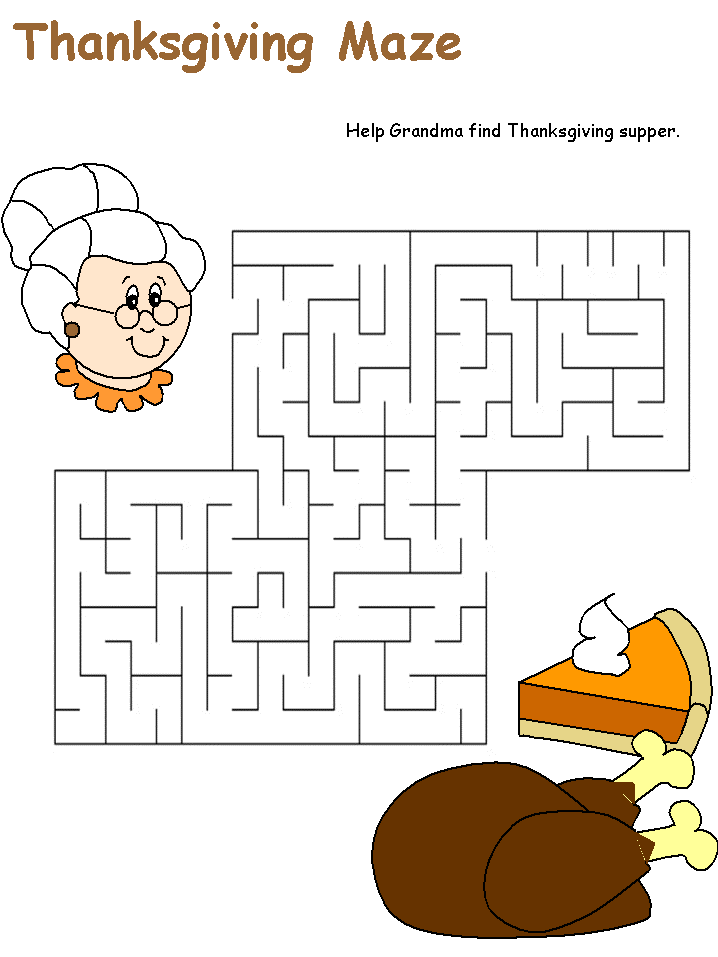
doors, there
were hundreds of birds and butterflies, and the great pine
woods were
always cool and shady when the sun was too bright.
When it was autumn the fathers gathered the barley and
wheat and corn
that they had planted, and found that it had grown so well
that they
would have quite enough for the long winter that was coming.
“Let us thank God for it all,” they said. “It
is He who has made the
sun shine and the rain fall and the corn grow.” So
they thanked God in
their homes and in their little church; the fathers and
the mothers
and the children thanked Him.
“Then,” said the Pilgrim mothers, “let
us have a great Thanksgiving
party, and invite the friendly Indians, and all rejoice
together.”
So they had the first Thanksgiving party, and a grand
one it was! Four
men went out shooting one whole day, and brought back so
many wild
ducks and geese and great wild turkeys that there was enough
for
almost a week. There was deer meat also, of course, for
there were
plenty of fine deer in the forest. Then the Pilgrim mothers
made the
corn and wheat into bread and cakes, and they had fish
and clams from
the sea besides.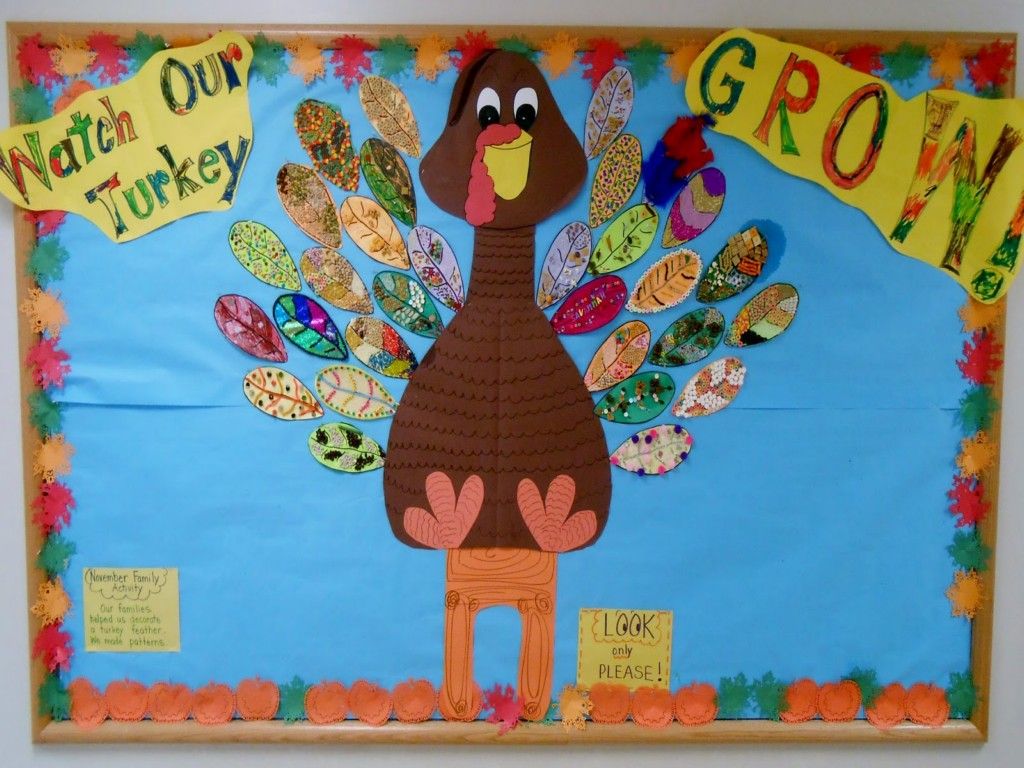
The friendly Indians all came with their chief Massasoit.
Every one
came that was invited, and more, I dare say, for there
were ninety of
them altogether.
They brought five deer with them, that they gave to the
Pilgrims; and
they must have liked the party very much, for they stayed
three days.
Kind as the Indians were, you would have been very much
frightened if
you had seen them; and the baby Oceanus, who was a year
old then,
began to cry at first whenever they came near him.
They were dressed in deerskins, and some of them had the
furry coat of
a wild cat hanging on their arms.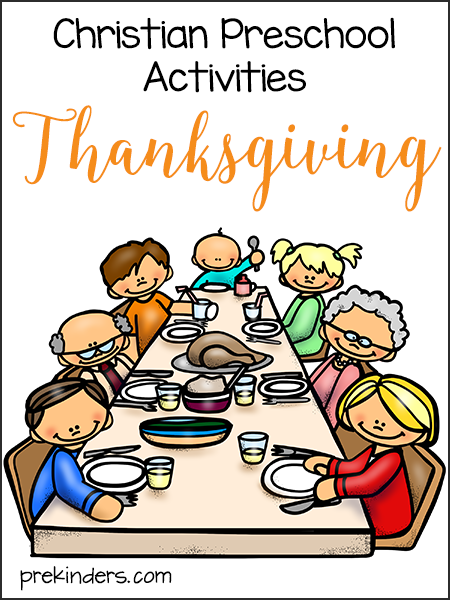
fell loose on
their shoulders, and was trimmed with feathers or fox-tails.
They had
their faces painted in all kinds of strange ways, some
with black
stripes as broad as your finger all up and down them. But
whatever
they wore, it was their very best, and they had put it
on for the
Thanksgiving party.
Each meal, before they ate anything, the Pilgrims and
the Indians
thanked God together for all his goodness. The Indians
sang and danced
in the evenings, and every day they ran races and played
all kinds of
games with the children.
Then sometimes the Pilgrims with their guns, and the Indians
with
their bows and arrows, would see who could shoot farthest
and best. So
they were glad and merry and thankful for three whole days.
The Pilgrim mothers and fathers had been sick and sad
many times since
they landed from the Mayflower; they had worked very hard,
often had
not had enough to eat, and were mournful indeed when their
friends
died and left them. But now they tried to forget all this,
and think
only of how good God had been to them; and so they all
were happy
together at the first Thanksgiving party.
All this happened nearly four hundred years ago, and ever
since that
time Thanksgiving has been kept in our country.
Every year our fathers and grandfathers and great-grandfathers
have
“rejoiced together” like the Pilgrims, and have
had something to be
thankful for each time.
Every year some father has told the story of the brave
Pilgrims to his
little sons and daughters, and has taught them to be very
glad and
proud that the Mayflower came sailing to our country so
many years
ago.
How to tell the true story to kids
Most people hear the story of Thanksgiving from a young age and it’s pretty simple.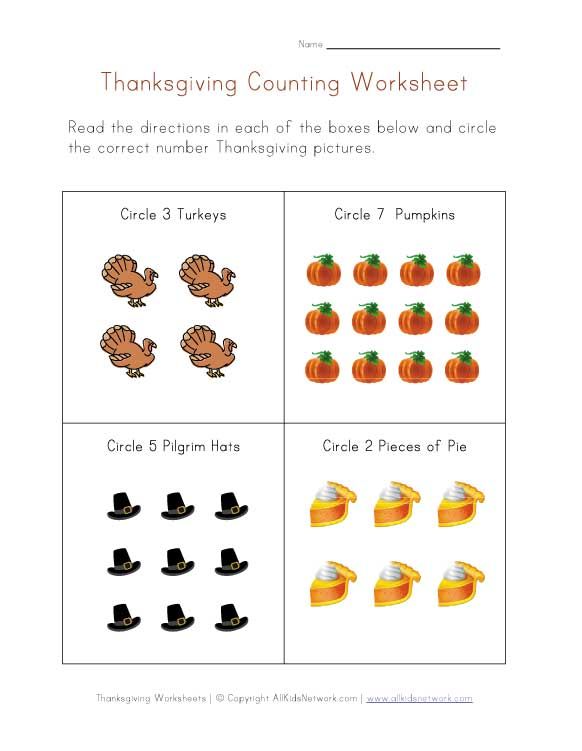
But that’s only half the story. The Wampanoag tribe, the Indigenous people who lived at Plymouth Rock, experienced this moment very differently. Are your kids ready to hear the real history? The answer is probably yes.
“Parents can start by telling their kids the truth and offering their children the more complex narrative. Kids are smart and capable of understanding,” Matika Wilbur of the Swinomish and Tulalip tribes told TODAY Parents. She co-hosts the podcast All My Relations, which aired an episode called “Thanksgiving or Thankstaking?” that aims to understand the Wampanoag perspective.
“Thanksgiving is rooted in a historical fallacy,” Wilbur said, and the story is tied to the idea of white supremacy. “The main Pilgrim narrative coincides with colonization that was inherently oppressive and brutal.
Parents might balk at introducing the “real history” to their children because they think their children can’t handle it. But that’s not giving them enough credit, Wilbur said.
The backstory of Thanksgiving
Wilbur — who traveled to over 400 Tribal Nations for her documentary Project 562 — and her co-host Adrienne Keene, a citizen of the Cherokee Nation who is an assistant professor of American Studies and Ethic Studies at Brown University, spoke with Paula Peters and Linda Coombs, Wampanoag historical scholars, for the episode.
Peters said sharing the Wampanoag perspective is essential but can be tough for parents.
“It’s difficult because we have to talk about some raw topics in order to get a fuller, clearer understanding,” Peters, a citizen of Mashpee Wampanoag Tribe and a researcher and journalist, told TODAY Parents. “Quite honestly, cherry picking that moment when the Wampanoag and Puritans happen to break bread as the ‘Kumbaya’ moment really does not do it any justice.
Prior to the Pilgrims landing, the Wampanoag had experienced a plague that devastated their community. A “plague” is something Peters thinks children can certainly understand these days.
“This is all (relevant) right now,” she said. “Think of what we (had) to say to our children, why they can’t go to school and parents can’t go to work — to protect our elders.”
She says how parents share information with their children is “very personal” but believes they should introduce Indigenous history early and encourage their children to think critically about what they read. The Wampanoag people did not rush out to welcome the newly arrived Puritans, for example. They took months to observe them.
“Being able to talk about the true trepidation that the Wampanoag had with forging a relationship (is important),” she said. “It wasn’t like new neighbors moved in.
Children definitely get what it’s like meeting someone new who seems unlike them.
“That is a creative and personal way to make it clear … You get a new neighbor next door. They don’t speak your language. They don’t go to the same church. They do everything differently,” Peters said. “How are you going to engage with these people? These were all questions the Wampanoag leader had to ask himself.”
The Wampanoag Tribe also knew that other people who were like the Pilgrims had raided their food supplies in the past, so they felt wary.
“What if you had a new neighbor that moved in and the first thing they did was take your cereal and Cracker Jack and not even leave a note?” she said. “These were new neighbors who came on the same kinds of ships that would have stolen from their fathers, their cousins, their uncles.”
Who was ‘Squanto’ and how did he know English?
Another part of the story that parents can encourage their children to think deeply about is that role of Tisquantum, aka Squanto, who served as a liaison because he spoke English.
“We all had this story of the Mayflower and Plymouth colony and wasn’t it wonderful that they came and they met with Squanto and he spoke perfect English?” Peters said. “Children are going to question, ‘Well, how did he learn to speak English?’”
That’s a natural place to add more information. “Squanto” had been kidnapped by European settlers and held captive as a slave years earler.
“The answer to that involves all of those other things, being kidnapped, the plague,” she said. “Those parts of the stories are very tragic.”
There are few books by Indigenous writers for children looking at the history of Thanksgiving, Peters said. And, Wilbur said only a handful of states — including Montana, Washington, Louisiana, Massachusetts, New Mexico and New York — mandate Indigenous history in the curriculum. Parents can reference these curricula online or turn to something like the Smithsonian’s Native Knowledge 360º Education Initiative for resources.
“It should be in the schools,” Peters said.
How to learn more about Native American history
Peters participated in Plymouth 400, the 400th anniversary of the Mayflower landing. The website and events includes Wampanoag history. Parents can explore this and the British sister project Mayflower 400 to learn more.
“There was a great interest worldwide in learning the true story,” she said. “We were a little bit nervous: ‘Would they really hear us?’ In the past there has been a history of not interpreting what we say properly.”
But people did want to listen.
“I was really surprised by how welcome it was,” Peters said.
And, Wilbur saidAll My Relations will be hosting an anti-racism book club in its third season.
“That’s definitely something parents could follow along with,” she said.
Peters suggests that families who want to learn more start by learning the Indigenous history of where they are. You can look on this map to see what Native American tribe lived where you live now.
“The very first thing they can do is acknowledge where they live,” she said.
Wilbur agrees.
“The path to reconciliation begins with developing relationships with the Native people whose land we occupy. Everywhere in North America has an Indigenous history and story, and there are still Indigenous people living here,” she said.”There is an opportunity to build relationships with Indigenous people and support their cause.”
And families who want to do more can do more, while perhaps creating new traditions.
“They could become an ally to Indigenous communities by supporting their causes, either with donated time or money,” Wilbur said. “Thanksgiving allows all of us to evaluate how we are being of service to community, so rather than centering what I’m grateful for once a year, we could ask ourselves, ‘How we are expressing that gratitude in a way that gives back?’”
Related video:
This story was originally published in November 2020.
Thanksgiving Books for Little Learners
Thanksgiving is the perfect time of year to show your little learners what it means to be thankful. There’s no need for big events, small things work just fine. From the falling leaves, friends, family, or even a favorite piece of clothing. Let’s remind kids that being thankful starts with them.
This post contains affiliate links.
Feeling Thankful
This book shows kids how to be thankful for the small things…. even things as simple as a smile.
Bear Says Thanks
Bear says thank you by making his friends a meal. What a great way to show gratitude!
There Was an Old Lady Who Swallowed a Turkey!
She’s at it again! This time, the old lady swallowed a turkey, along with many other items including pumpkin pie!
This is the Turkey
Max gets to help pick out the turkey this year. Everything is going perfectly until the unexpected happens.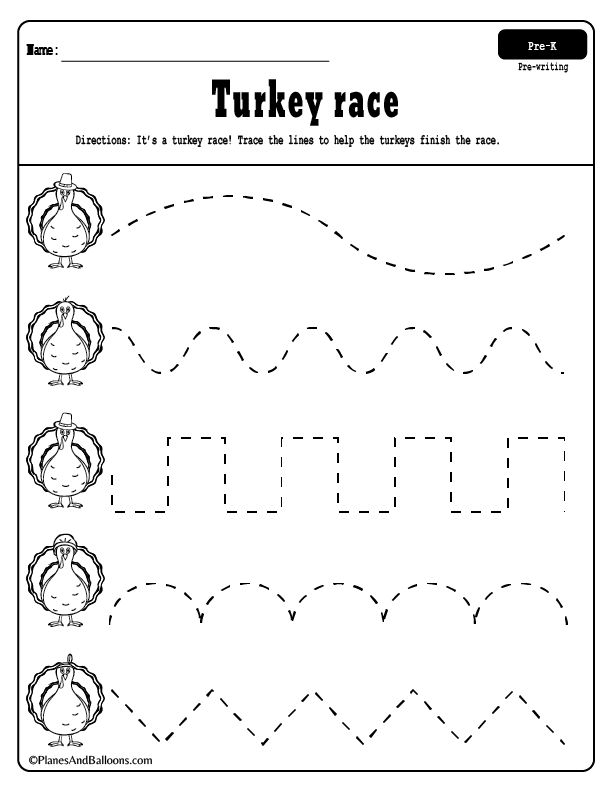
I Know an Old Lady Who Swallowed a Pie
After the old lady swallows a pie, she eats the rest of the Thanksgiving meal too! Squash, salad, everything on the table!
Five Silly Turkeys
Turkeys can be very silly birds. They can twirl on a dance floor. And did you know that they are scared of bees? This book is full of laughs.
10 Fat Turkeys
The silliness continues with 10 turkeys who are up to shenanigans. The rhyming words alone will make students giggle.
The Thankful Book
There are so many reasons to be thankful. From music to pets, and more. Kids will discover how to be appreciative of everything, even if it is small.
Thankful
Through rhymes and gorgeous illustrations, this book highlights what everyone in your neighbor can be thankful for. From the firemen to the gardener, everyone has a reason to be grateful.
Thank You, Thanksgiving
As a little girl runs an errand for her family, she shows thanksgiving to all of the things in her life, all the way down to her warm boots.
Bear Says Thank You
Through a craft project, Bear expresses his gratitude! This book shows students how they can show their thankfulness with the help of art.
Llama, Llama Gives Thanks
Thanksgiving with Llama Llama is full of gratitude. There is also some yummy pumpkin pie and big piles of leaves to tackle.
Thanksgiving is for Giving Thanks
Celebrate family, friends, and delicious food with this book that is full of great expectations for Thanksgiving day.
Just So Thankful
Little Critter becomes a bit jealous of a friend when he finds out that he has everything Critter wants. But he soon discovers that things are just that, things. What really matters is his family.
Being Thankful
Another great Critter book that is centered around gratitude. There is a great idea in this book that has to do with a grateful rock. It is perfect for young kids.
God Gave Us Thankful Hearts
This is one of my favorite Thanksgiving books.
Fry Bread
Teach your preschoolers and kindergarteners more about the Native American culture with this sweet story about a wonderful tradition. This will warm your heart and really values family and thankfulness.
We are Grateful
Learn about the Cherokee nation and some of the ways that they show thankfulness. You will follow a tribe for one year and see a little into their traditions.
We are Water Protectors
Join one young brave girl as she takes a stand against the black snake that wants to poison the water supply. Learn about Native American culture and taking care of the Earth’s important resources.
Turkeys
Teach your little learners about turkeys that are raised on a farm in this nonfiction text. The photographs are up close and show some really cool details about this interesting bird.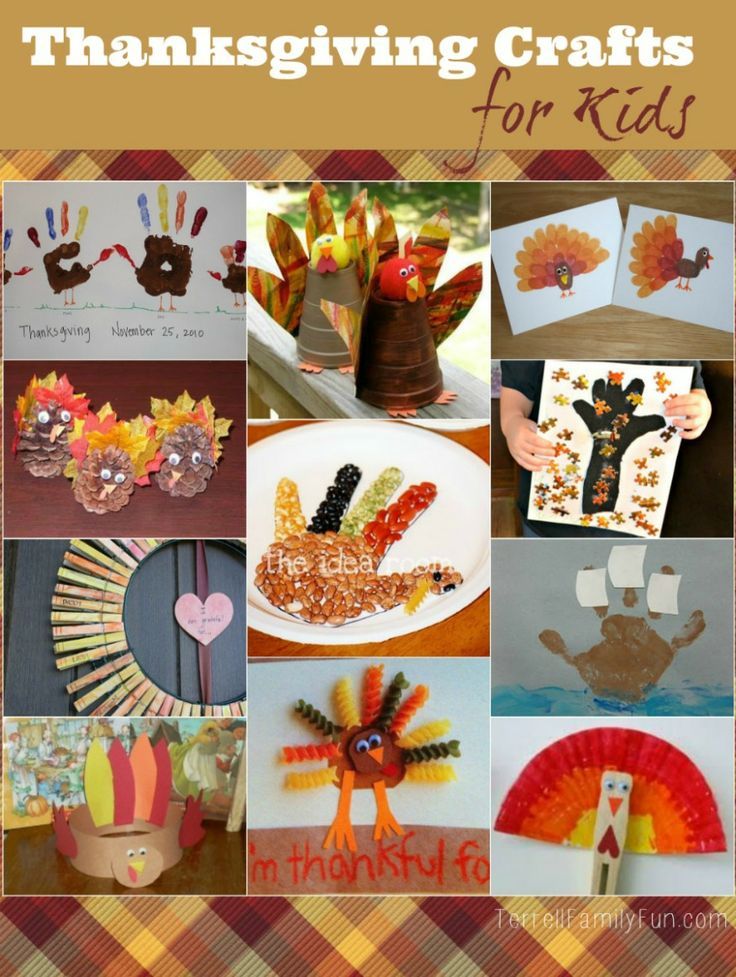
How to Catch a Turkey
Oh no! There is a turkey loose in the school! How will the kids catch it? Your students will love seeing what silly ideas the characters have. I love to use this book as an introduction to a STEM project for making turkey traps.
Check out my favorite Thanksgiving Centers & Activities I use in my classroom for a Thanksgiving theme. Find out how you can engage your students in hands-on Thanksgiving-themed learning activities. Make learning so much fun, they don’t even realize they are doing work. Don’t forget to grab your FREE Thankful Placemat too!
Love these Thanksgiving books? Pin this image!
Want more to check out more of my favorite books for little learners? Check out my Book List Blog Series with over 33 different themed book lists (and growing)! If there is a book list for a theme you need just let us know so we can create it for you.
History of MBDOU -Information for parents
WE HAVE A GLORIOUS HISTORY, A WORTHY PRESENT AND PROMISING FUTURE!
The history of the development and formation of our preschool educational institution dates back to 1985 of the last century.
March 8… We celebrate this day as a holiday for mothers, grandmothers and all women. And, it so happened that the concepts of “holiday” and “gift” have become in principle inseparable. Probably, this is exactly what the administration of the Shakhty branch of the Novocherkassk Electric Transport Engineering Plant (ZETM) in Shakhty reasoned when they gave their workers an invaluable gift – March 5, 1985 was put into operation nursery-kindergarten No. 75 “Zhuravushka” Shakhty.
Elena Ivanovna Komolova was appointed head of the nursery.
In the 1990s, the system of teaching six-year-olds was tested in the country. A new type of institution has emerged, carrying out the continuity of preschool and elementary levels. The existing conditions made it possible to open an experimental first class on the basis of a nursery garden in 1987 for teaching children from 6 years old.
Along with this, in order to experiment in raising children at home, having studied the experience of the Kama plant in creating home-based nursery-kindergartens and, having agreed on the issue of opening a nursery-kindergarten at home with the administration of the plant, the kindergarten staff took part in organizing kindergarten branch.
In 1993, due to a sharp deterioration in the economic situation of the plant, kindergarten No. 75 was closed. In April 1994, the nursery garden was transferred to the municipal ownership of the city and since September 1994 it has completely resumed its work.
Since 1998, the municipal preschool educational institution has been headed by the head, “Honorary Worker of General Education of the Russian Federation” Padashul Nelli Viktorovna.
Profound transformations in the social, economic and socio-cultural spheres of life of our city, as well as the whole country as a whole, had a great influence on the further development of the kindergarten.
The teaching staff of the preschool institution got the opportunity to independently determine the content component of education, use new technologies, programs, which required the development of a new concept and development program for the institution itself.
Understanding the complexity of this issue and the need for scientific guidance, since 1995, the preschool educational institution has been cooperating with the Department of Preschool Pedagogy and Psychology of the Rostov State Pedagogical University.
Thanks to close interaction with the candidate of pedagogical sciences, professor L.V. Kompantseva, the kindergarten team enters into a mode of experimental work, which determined new prospects for the development of a preschool institution.
Scientific and practical seminar at preschool educational institution No. 75
(second from the right – Ph.D., Professor of the Russian State Pedagogical University L.
V. Padashul conducted scientific research on the problem of developing the artistic and creative abilities of children. The role and significance of this research in the development of pedagogical science and practice, the main theoretical and methodological provisions are reflected in a number of books by leading scientists of the Russian Federation:
Kazakova T.G. Theory and methodology for the development of children’s fine arts: a textbook for university students studying in the specialties “Preschool Pedagogy and Psychology”, “Pedagogy and Methods of Preschool Education”. M.: Humanitarian publishing center VLADOS, 2006. pp.15-16., 206-209.;
Kompantseva L.V. Innovative activities of preschool educational institutions to ensure the quality of art education. Scientific and methodological manual. Rostov-on-Don; Bulat, 2008., p.110-123.;
are awarded by A.M. Strauning, Doctor of Pedagogical Sciences. (j. “Preschool education” No.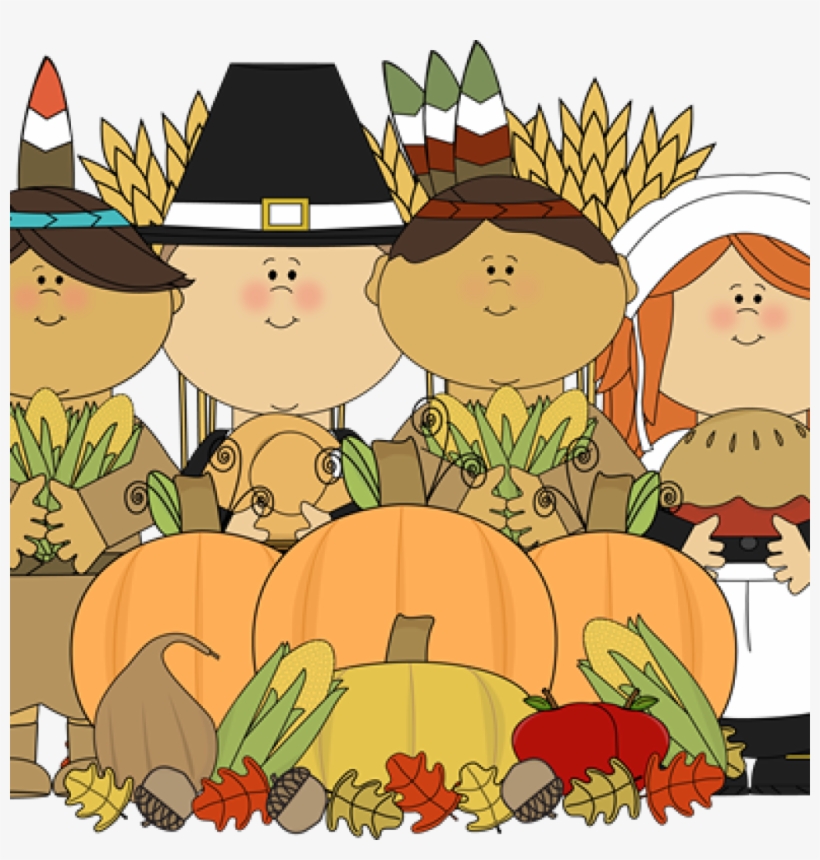
are included in the Program of artistic and pedagogical practice in the specialty “Pedagogy and methods of preschool education” -031100, RSPU, Rostov-on-Don, 1997.
The teaching staff supported the ideas of their leader. Innovative activity prompted the creative group of the kindergarten to determine the development paths that are consonant with the interests, training, and professional competence of each teacher participating in it.
On the basis of a preschool institution, a model of an artistic and creative complex (CTC) is being developed, consisting of several interconnected components in which various areas of the pedagogical process are carried out – familiarization with cultural values, accumulation of social experience, search, cognitive, artistic, communicative activities of children .
In the artistic and creative complex of the preschool educational institution, the process of cultural identification of the individual is created and implemented, the epicenter of which is the child as a free subject of life creation.
The developing content of children’s activities, the introduction of new technologies of education and development, provide a student-oriented interaction of all subjects of the pedagogical process.
Developed by the head of the preschool educational institution Padashul N.V. and aimed at developing the artistic and creative abilities of older preschoolers, the author’s program “Flower-Semitsvetik” was tested, introduced into the educational process of kindergartens in the city and region, published by decision of the editorial and publishing department of the Rostov State Pedagogical University in the methodological guide for educators “Search. Initiative. Creativity. – Mines: RSPU.1996, as well as in the journal “Preschool education” No. 2, 1999. – P.6 – 16.
children in general.
The experimental experience of the kindergarten on this issue was presented at the regional scientific and practical conference “Modern problems of preschool education in the South Russian region on the way to the XX I century”, dedicated to the 90th anniversary of the birth of Z.
In 2001 for the first time in the history of preschool education in the Rostov Region and the North Caucasus District, the head of a preschool educational institution, Padashul Nelli Viktorovna, was awarded a degree – Candidate of Pedagogical Sciences.
In January 2001, according to the results of state certification and accreditation, the kindergarten was assigned the high status of the Child Development Center , which was successfully confirmed during the next certification of preschool educational institutions in 2005.
Working in depth on the problem of teaching preschoolers the rules of the road, the staff of the preschool institution in the 2004-2005 academic year became the winner of the All-Russian review competition of educational institutions on the prevention of children’s road traffic injuries.
In 2009, on the basis of a preschool institution, regional seminar was held for traffic police officers to sum up the results of the regional review competition “We will protect you, baby!” (the photo report of the seminar was presented on the pages of the regional newspaper “Avtodon” No. 15 (397) dated April 22, 2009). The kindergarten became the absolute winner of in three nominations in the regional competition “We will protect you, baby!”
Until now, the kindergarten annually wins prizes in this area in municipal and regional competitions.
In 2017 the kindergarten became the winner in the regional competition “Journey to the Land of Road Signs”, in the nomination “For the best thematic Internet page on road safety” (as part of the implementation of the “Decade of Action to Ensure Road Safety 2015-2020” program).
Over the years of existence of the preschool educational institution, one of the unique traditions of the educational institution has developed in the team – the need for continuous improvement.
Being in a real professional and creative search, preschool teachers work out the optimal conditions for the full development of preschoolers.
Kindergarten teachers take part in All-Russian, regional and municipal show jumping. In different years, they were attended by:
- educator Golendukhina N.A. – winner “Best Pedagogical Worker
preschool education of the Rostov region”,
- educators Prokopenko A.A., Boyko G.B. – 1st place in the regional competition for traffic rules “We are
“We will protect you, baby!”,
- A.K.
activities of psychologists’ offices in preschool educational institutions, early
in teaching a foreign language, awarded with a silver medal in the All-Russian
competition of innovative ideas and projects for teaching, educating and developing children Diploma of the laureate in
All-Russian competition of original ideas, promising initiatives “Vocation-educator”
- educators Kurdupova L.
V., Orlova A.V., Liguta N.V., Prokopenko A.A. – Participants of the city competition “Teacher of the Year”.
The administration of the preschool educational institution has always sought and created conditions for the search work and scientific research of teachers: opening an experimental site on the basis of a preschool institution; development and approbation of copyright and variational programs; participation in scientific and practical conferences, seminars, publication of articles in collections, journals.
In 2012, MBDOU No. 75 completed work in the status of municipal experimental site on the problem: Pedagogical innovations and the organization of their implementation in the activities of the preschool educational institution as a means of its development (Order of the Department of Education of the Administration of the City of Shakhty No. 558 of November 19, 2009 “On the assignment and confirmation of the status of the municipal experimental site of the OS in the city of Shakhty”).
Based on the materials of the experimental work, together with the Pedagogical Institute of the Southern Federal University, , a methodological collection “Pedagogical innovations in the activities of preschool educational institutions as a means of its development” was published / L.V. Kompantseva, N.V. Padashul. (Rostov-on-Don-Shakhty, 2009.).
Work experience of a preschool institution is included in all-Russian project 2012-2013 “School of the Digital Age”.
According to the results of work on the ecological development of preschoolers, the kindergarten was awarded by the Mayor of Shakhty The badge of honor “For the purity of native nature.”
In 2015, scientific and experimental work was completed on the problem “Peculiarities of the development of the cognitive and emotional sphere of children with attention deficit hyperactivity disorder in a situation of semantic initiations”, carried out in 2013-2015.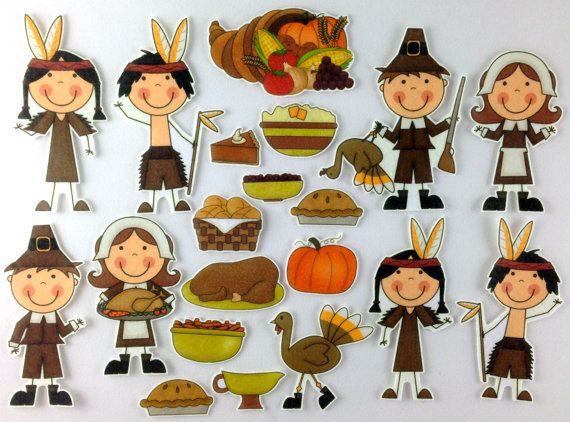
As a result of the work carried out, the following tasks were solved:
– a study was made of the development of behavioral and emotional characteristics in children with attention deficit hyperactivity disorder in senior preschool age in a situation of semantic initiation;
– the latest empirical research on the origin of the development and correction of attention deficit hyperactivity disorder in preschool children was studied;
– a diagnostic system was developed and tested for collecting psychological anamnesis about the manifestation and origin of attention deficit hyperactivity disorder in children of the main and risk groups;
– a correctional and developmental program was developed and experimentally tested, stimulating semantic initiations for children of senior preschool age with attention deficit hyperactivity disorder.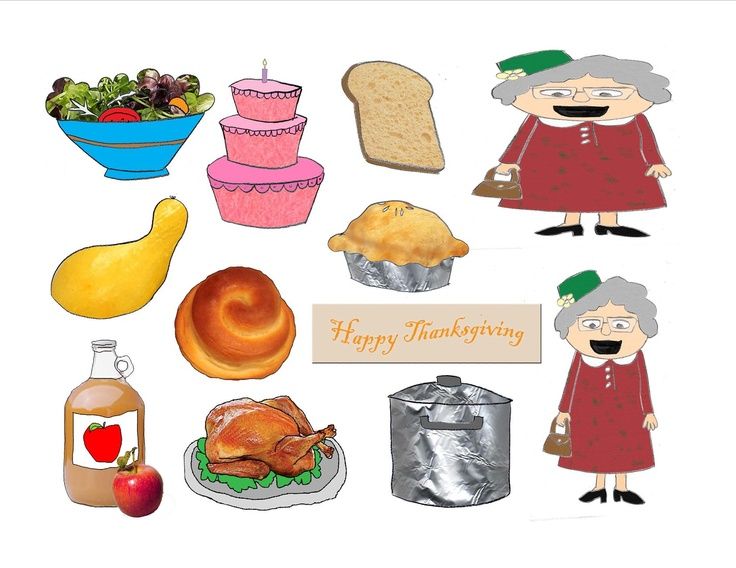
Orientation to success, high emotional saturation of classes, constant reliance on interest, fostering a sense of responsibility – all this had a positive effect in the psychocorrection of the behavior of hyperactive children, a more complete disclosure of creative abilities, the development of self-awareness and self-esteem of the child, which undoubtedly helped to provide equal opportunities for the full development of each student.
In 2014, the teaching staff received a letter of thanks from the Department of Psychology of the Southern Federal University for fruitful cooperation on the problem of psychological support for older preschool children with attention deficit hyperactivity disorder, which ensure the effectiveness of psychocorrection of the behavior of a hyperactive child.
In June 2014, the experience of the kindergarten on the problem “Development of the communicative competence of a preschool child as one of the conditions for the implementation of GEF DO” was presented at the Interregional scientific and practical conference “Resources for the development of the educational environment of preschool educational institutions in the context of the implementation of Federal State Educational Standards preschool education “(Materials of the interregional scientific and practical conference on June 26-28, 29014 –Zlatoust-Moscow, pp.
In the same 2014, due to the long queue of children for admission to the preschool educational institution, a major reconstruction of the physioblock of the institution was carried out, as a result of which an additional 20 places were opened for preschool children . Another group began to function in the kindergarten.
One of the important pages in the history of the institution is the interaction with the GBU DPO RO “Rostov Institute for Advanced Studies and Professional Retraining of Educational Workers”.
The result of this cooperation was the organization of innovative activities of the preschool educational institution, in the status of the regional innovative experimental site for testing and implementing the main general educational program “World of Discovery”, which was assigned to a preschool institution by Order of the Ministry of Education of the Rostov Region dated April 16, 2013 No.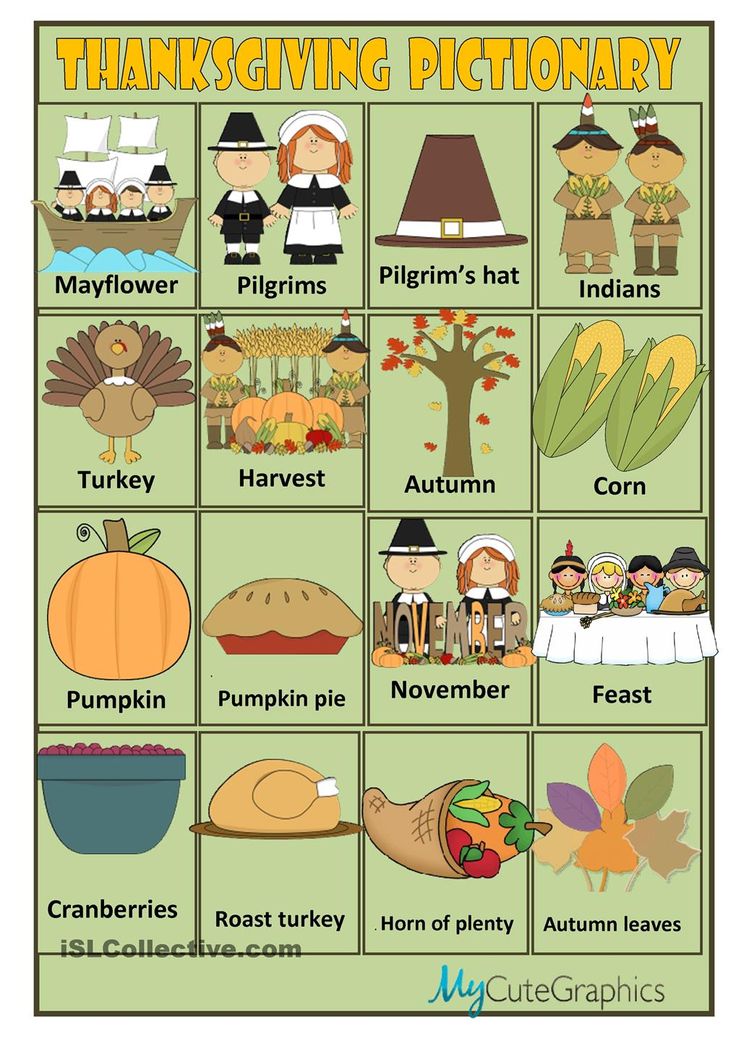
Under the guidance of L.V. Bekh, scientific consultant, candidate of pedagogical sciences, senior methodologist of the department of preschool and primary education of the RIPK and PPRO, the process of updating the content, forms, methods of working with children, teachers and parents was carried out in a preschool institution.
Changing the form and content of the activities of the DOW, in our understanding, this is an objective-observant process that is a response to time challenges, a change in childhood model, a sharp acceleration of scientific and technological progress, expanding the role of information and cmmic technologies, global requirements for the transition from accumulation knowledge to the formation of competencies.
The desire of teachers to interest parents, to involve them in the experiment, to make them their assistants, was rewarded by increased activity of parents during parent meetings, joint events for children. So, on one of the sunny April days of 2015, in the kindergarten, in honor of the 70th anniversary of the Great Victory, the action “ Victory Lilac.
Children with special diligence planted lilac seedlings. Parents did not stand aside either – fathers and mothers unanimously helped young patriots. And as a wish for the future, the words of Vladik Mazin’s grandfather sounded: “Let our children grow up, and this lilac planted by their hands in honor of the 70th anniversary of the Great Victory, and let them enjoy spring and a peaceful sky every year!”
One of my favorites was doing rhythmic gymnastics after sleep, together with my parents, during which A.I. Burenina’s program “Rhythmic Mosaic” was implemented.
When conducting experimental work on testing and implementing the World of Discovery program, in-depth attention was paid to the integration of basic and additional education, while new tasks were identified not only to improve the quality of educational services, but also to meet the needs of parents in an increased level of education children, the maximum satisfaction of the requirements of the school for the future student.
As a result, the regional components of preschool education have expanded, new narrow specialists (choreographer) have been introduced to the staff of the preschool institution, which made it possible to include new subjects, integrated classes in the curriculum, to search for organizational and content aspects of the activities of teachers in possible models of interaction based on competence orientation of preschool education as one of the conditions for the implementation of the Federal State Educational Standard.
The main result of the activities of the MBDOU was the mastering by the pupils of the MBDOU a set of competencies – integrative personal characteristics that determine the child’s ability to solve a variety of available life tasks.
In April 2016, at the Interregional Scientific and Practical Conference “Implementation of the Federal State Educational Standard: Problems and Prospects for the Implementation of the Educational Program of Preschool Education” World of Discovery “(Rostov-on-Don) with the report “Educational program as a basic basis organization of an integrated educational process in the preschool educational institution “, the head of MBDOU No.
The organization and implementation of innovative activities in the pedagogical practice of preschool educational institutions have always been considered by the teaching staff as a huge potential for improving the quality of education.
For several decades, MBDOU TsRR No. 75 has been a pilot (base) educational institution of the city in the artistic and aesthetic direction.
On the basis of a preschool institution, city methodological associations, scientific and practical seminars for teachers and specialists of kindergartens in the city and region are constantly held at a high professional level.
The experience of innovative work of the MBDOU Central District Hospital No. 75 of the Shakhty on the problem of “System Management of Innovation Processes in the Preschool Educational Institution” was represented by the head of the MBDOU No. 75, Schakhty Padashul N.V. at III All-Russian Congress workers of preschool education , held in 2013 in Moscow (magazine “Modern preschool education” No. 8 (40) / 2013.).
In October 2016, the head of the preschool educational institution Padashul N.V. – Delegate of the IV All-Russian Congress of Preschool Education Workers.
One of the most memorable events of this forum was the meeting with Veraksa Nikolai Evgenievich – Doctor of Psychology, Professor, Rector of the Moscow Pedagogical Academy of Preschool Education, author of the program “From birth to school”, according to which our preschool institution works
In November 2015, the results of the I V All-Russian Educational Forum “School of the Future: Problems and Prospects for the Development of Modern Education in Russia” were summed up.
According to the results of the All-Russian competition kindergarten was awarded: Laureate diploma and gold medal “100 best preschool educational institutions in Russia”, head Padashul N.V. – Diploma of the winner in the nomination “Person of the Year” and the Badge of Honor “Head of the Year -2015”.
According to the results of the regional competition “Kindergartens for Children” our preschool institution in April 2016 became a silver medalist in the nomination “The Best Municipal Kindergarten of the Rostov Region”.
The competition was held with the support of the Legislative Assembly of the Rostov region, the Rostov regional branch of the United Russia Party in order to identify, support and disseminate innovative experience, determine the best kindergartens, as well as effectively working teaching and management teams of the preschool education system in the Rostov region.
The nomination “The best municipal kindergarten in the Rostov region”, according to the Regulations of the competition (No. 02.9.-207 of 12.23.2015), was aimed at identifying municipal MBDEIs that successfully implement innovative mechanisms for the modernization of municipal systems that provide affordable high-quality preschool education in conditions for the introduction of GEF DO.
The experience of the kindergarten was presented by at various international, regional, regional conferences, published in a number of various scientific collections and teaching aids for educators.
The achievements of the team of teachers and children of Preschool Educational Institution No. 75 were marked by numerous certificates, letters of thanks and diplomas of various levels.
This became possible because, in our understanding, a modern kindergarten is one where harmony reigns: professionalism and science, work and rest, search and discovery.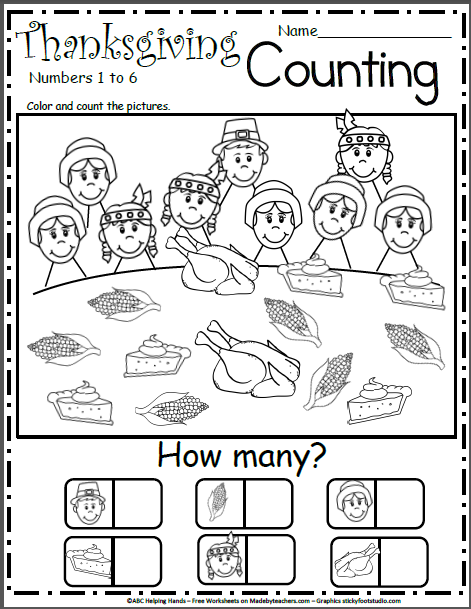
Analyzing the work of the institution, the conclusion can be traced – the institution is not just functioning, but actively developing, which can be seen in all areas of the institution.
Throughout its history, the kindergarten team has been actively involved in the life of the Frunze village, where the kindergarten is located – this includes annual work on the improvement of the park, and the holding of environmental campaigns “Plant your flower”, “Clean morning”, and participation in concerts programs and competitions, both village and city, taking place in the park
All this so that each of our pupils can proudly say: “My small Motherland is the village of Frunze. City of Shakhty.
In 2015 the kindergarten celebrated its 30th anniversary. In honor of this event , a mountain ash alley was laid. Our guys named it – Friendship Alley. Why Friendship? Yes, because these fragile rowan seedlings were planted by graduates of our kindergarten, together with graduates of secondary school No.
Now 30 mountain ash, donated by the director of the trade enterprise R. Dallari, and planted by the thirtieth anniversary graduation of children, will decorate the entrance to the kindergarten.
In August 2016, the kindergarten team, following the results of the city competition “Blossoming City”, was awarded a Certificate of Honor for winning the nomination “The most landscaped territory of an educational institution”.
Today MBDOU No. 75 is an educational institution of a modern type with established traditions and introducing innovative scientific achievements, which has been awarded the status of a municipal methodological resource center by the Ministry of General and Vocational Education of the Rostov Region. The kindergarten is a base of excellence for teachers of preschool institutions in the city and the Rostov region.
Our mission is to bring together the preschool educational institution and the family to create an environment that reveals the individuality of each child and contributes to the formation of competencies that will ensure his success today and in the future.
Kindergarten is really the first stage of education. It is the development of the child, his familiarization with culture, the development of intelligence, the protection and promotion of health. It is here that our future, the future of our Russia, is being laid.
THE FUTURE STARTS TODAY!
MEETING WITH LOVE, SEEING OFF WITH PRIDE!
History of education in the city of Murmansk
Phone: 310-584
garden number 73. Our kindergarten is located near Semenovskoye Lake in Leninsky
district. Near the recreation park. Naydenova O.P., oceanarium; MOIPCRO,
formerly the Inter-Union Palace of Culture.
The kindergarten was designed for 140 children. Worked
6 groups. (2 groups of early age, 4 preschool). Currently
90 children, these are 5 groups (2 groups of early age, 3 preschool)
|
From 1979-2003 Uvarova Raisa |
|
Since 2003 Until now |
Our labor veterans –
they are highly professional specialists:
Kindergarten is over 45 years old.
a garden, but a house of joy. More than 30 years of experience in preschool
No. 73:
|
Lobanova Lyudmila Gavrilovna, |
|
Demyanova Lyudmila Grigorievna, |
|
Antonovskaya Zinaida Nikolaevna, |
Worked in a kindergarten for more than 25 years and were awarded a Certificate of Merit
Ministry of Education and Science of the Russian Federation educators:
|
Vorobieva Marina |
Baranova Irina Leonidovna |
Petrik Olga Parmenovna |
These are enthusiastic teachers, special people.
give themselves to children. Differ in working capacity and pedagogical
skill. They have accumulated interesting experience, a set of ideas. They always
ahead of all, these are creative, restless people, seekers and creators.
For children, their presence is a joy, it is when everyone is interested.
More than 25 continue to work alongside teachers
years old junior teacher Farbitnik Irina Vasilievna. This is a hard worker
irreplaceable person. Her group is always cozy, clean and bright.
More than 25 years of experience, and now on a well-deserved
rest of the cook Belousov T.N. and Cherkasova V.F. Thanks to their skillful hands
catering in kindergarten has always been of a good standard. AT
In the 1990s, they took part in city exhibitions of children’s dishes.
New young people join the teaching staff
specialists, they are annual participants and diploma winners of city competitions:
in 2000 “My vocation is an educator”, since 2003 “Steps of Mastery”.
For more than 30 years, the kindergarten has been working in the art
aesthetic direction. The teaching staff helps preschoolers
discover the beauty and diversity of the world. Our children have many hobbies:
they love different activities, visit creative studios with pleasure
and sections.
|
Children are active participants in creative urban, |
Our
main achievements …
1997 – Winners of the city festival “Magic
the world of fairy tales”; children’s dance competition “Spring drops”. Diploma winners
district competition of the young reader “Golden leaf fall”.
1998 – Winners of the district song contest “Crystal note”.
Diploma winners of the city exhibition “Modern approaches in aesthetic
development of a preschool child”; city sports festival
Athlete’s Day.
1999 – Winners of the district festival “Colorful Serpentine”. Diploma winners
city sports festival dedicated to the Day of Russia.
2000 – Diploma winners of the city exhibition “Education and Culture. Murmansk-2000″.
Participants of the city exhibition of children’s drawings “My Murmansk”
2001 – Winners of the district contest “Miss Charming”; district
competition “Healthy lifestyle”. Participants of the congratulatory speech
at the city festival “Spring Fantasies”.
2002-Participants of the celebration for the Day of the city “Drawings on asphalt”. Diploma winners
city review-competition “The theater is a miracle”, dedicated to the International
theater day; district festival of Russian folk art.
city competition of preschool institutions.
2003 – Diploma winners of the city sports festival. Participants of the anniversary
holiday school number 30.
2004 – Participants of the congratulatory speech at the city competition
young educators “Steps of Mastery”; Anniversary concert to
40th anniversary of the preschool institution.
2004-2009 Diploma-winners of the annual athletics races.
2005 – Participants of the congratulatory speech at the conference of pedagogical
employees of preschool institutions “Formation and development of the system of public
education in the Kola North”
2005-2009 Annual winners of competitions of creative works and for the best
drawing for Santa Claus. Lapland Reserve, Murmansk Region Diploma winners
city competition “My mast city”. Participants of the city exhibition
children’s drawing “Me and sport”
2005-2009 Annual participants of the city sports festival “White
teddy bear.
2006 – Participants of the congratulatory speech at the city competition
“Steps of Mastery”; Exhibitions of children’s drawings “My Murmansk; Prize-winners
children’s music festival “The theater is a miracle” Diploma winners of the city
sports holiday “Athlete’s Day”
2007 – Participants of the anniversary concert of the Palace of Culture. S.M.Kirov
2008 – Diploma holders of the championship in sports dancing for the Governor’s Cup
among young children; New Year’s mini-football tournament.
Our history…
We have outlined the main events very briefly and placed
photographs of different years. Comparing pictures, you can see external changes
and the immutability of many life situations. The past touches
present and is reflected in a new form.
|
In the 70s, children’s summer holidays were organized |
In the 1980s and 1990s foreign delegations visited the kindergarten.
Positive records of tourists and Gratitude from the agency of the State Committee for Tourism
The USSR was preserved in the historical book of a preschool institution.
From 1984-2003 in kindergarten on the basis of school number 30
for the first time in the city, classes for six-year-olds were organized.
In 1986, the kindergarten staff collaborated with the Murmansk Regional
Committee for the Protection of Peace, has gratitude from the Regional Commission for Assistance
To the Soviet Peace Fund for active participation in the activities.
At 19In 86, the team of employees of the nursery-kindergarten No.
in general physical education and basketball among employees of preschool institutions in Murmansk. (Diploma
city committee of trade unions)
In 1987, the kindergarten team took 3rd place in the public review
fire safety, work of voluntary fire fighting units
among the institutions of the district. (Diploma of the executive committee
Leninsky District Council of People’s Deputies)
In the difficult years of the 90s, a children’s fair was organized in the kindergarten.
things on which parents exchanged clothes “From mother to mother”.
Thank-you articles were published in the newspapers “Murmansky Vestnik” in 1996,
“Evening Murmansk” 1996, “Polar Truth” 1997-1998 “To the children’s
garden to the fair”, “Good idea”, “Good deed”.
In the 90s, horseback riding was organized for children from the “Amateur Club
horses.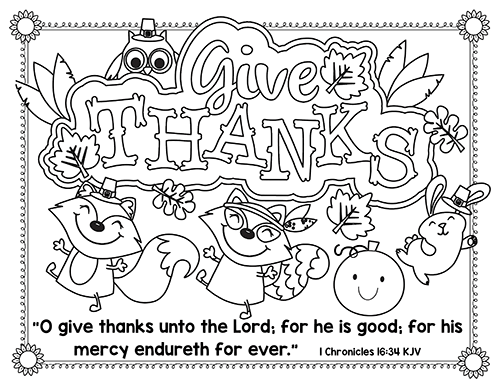
In the 90s, musical creative meetings were held with the composer Popov
V.A., his collection “Northern Songs” with a dedicatory inscription has been preserved
in kindergarten.
Pupils are annual participants in sports competitions, holidays,
athletics runs.
Holidays are the most joyful events for
children.
Teachers successfully cooperated with the Murmansk Pedagogical
school, now the Pedagogical College and with the Murmansk State
Pedagogical Institute, now a university, for the organization of pedagogical
student practice.
Seminars, open events for
students of courses of the Murmansk Regional Institute for Advanced Studies
education workers. Accumulated pedagogical experience, which is constantly
was presented to colleagues and received positive feedback, interesting
master classes were held.
collections: “Sprouts of Health” (experience of teachers of the Kola North) Murmansk, 1999.
compiler Kuznetsova V.M. MOIPCRO. “Holidays and entertainment with children
in the North “(collection of scenarios) Murmansk, 2002. Research Center “Pazori”, compiler
Kovaleva N.A. MOIPCRO.
Some events are connected with the history of the city of Murmansk
From 1962 years Murmansk house-building plant began to work and
during the functioning of the kindergarten, they became our chefs until
1990
In 1964, for the first time in Murmansk, Fisherman’s Day began to be celebrated, and we began to
participants in festivities.
In 1965, the Mir cinema opened, and my children and I began to visit
movie screenings.
In 1972, the Inter-Union Palace of Culture opened, we began to visit
children’s activities and a corner of nature.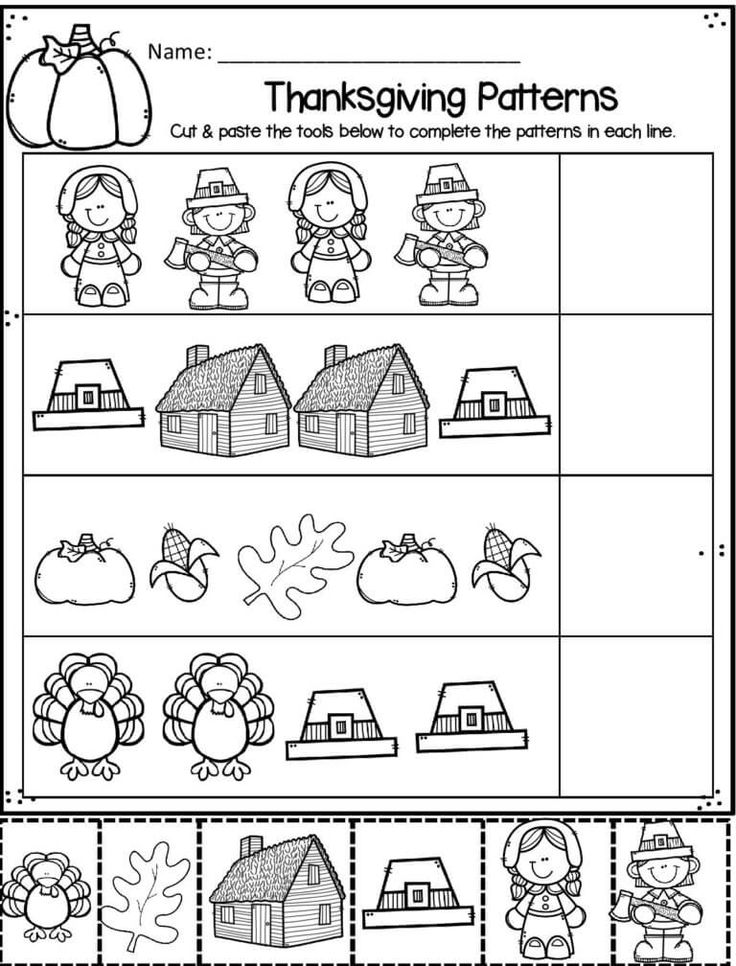
In 1973, we went with our children to Cape Zeleny, where a memorial
stone, and since 1974 a monument to the defenders of the Arctic (“Alyosha”) has been erected.
In 1985, the House of Pioneers was built on Semenovskoye Lake (House of Creativity
“Lapland”) and for the first time we began to attend children’s events..
In 1992, an oceanarium was opened on Semenovskoye Lake, and in 1996 a permanent
the building of the oceanarium, the children saw the animals of the northern seas for the first time.
In 1996, a children’s theater center was opened. Our children have become members
musical performances.
In 2004, a fountain was installed on Semenovskoye Lake, we went with children
enjoy the water.
Our children were present at the opening of the first flight of the Parovozik on Semenovsky
lake; in 2009 a playground on Gagarin street.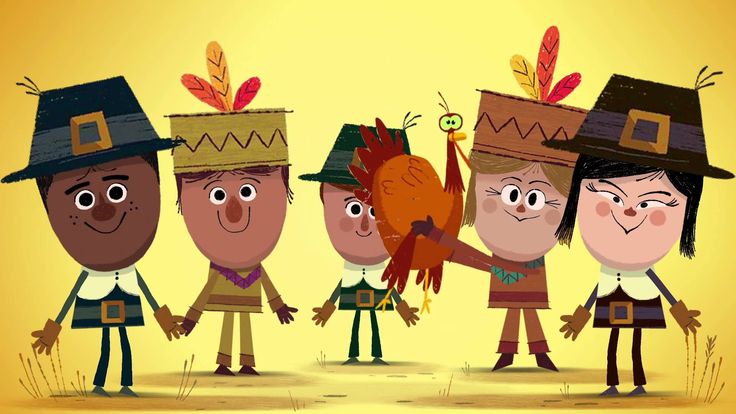
In 2009, the kindergarten turned 45 years old, and in the preschool
a creative, close-knit team of like-minded teachers continues to work.
After all, it is so important that every day early in the morning a child with a smile
met a smart and sensitive teacher.
90,000 History from 1975 to today
History of any team, any enterprise, including kindergarten, consists of the fate, life and labor paths of people, dedicated to the upbringing of children.
At the end of the distant year 1975, nursery school No. 53 was formed on the basis of the State Committee for Agricultural Engineering. He invested a lot of strength, energy, labor and love in creating a nursery garden.
Directly nursery-kindergarten No. 53 belonged to the Syktyvkar Rayselkhoztekhnika.
The first workers entered the new nursery. According to the teacher Timashkova Tatyana Semyonovna: “Before the opening of the kindergarten, the entire teaching staff worked in the pedagogical office. The cabinet was replenished with hand-made manuals. Produced didactic material and teaching aids. From candy wrappers they cut out counting material for mathematics classes, drew posters, plot pictures for classes on the development of speech and acquaintance with the outside world. They designed albums on the topics: seasons, professions, etc.”
On March 1, 1976, children’s voices sounded in a new large and comfortable house.
A very responsible and conscientious specialist, Raisa Ivanovna Rozova, was offered to head the preschool institution. She ran the nursery from 1976 to March 1994.
The teachers Elizaveta Panteleymonovna Kozlova and Galina Mikhailovna Belozerova came to work with her in the new nursery-kindergarten.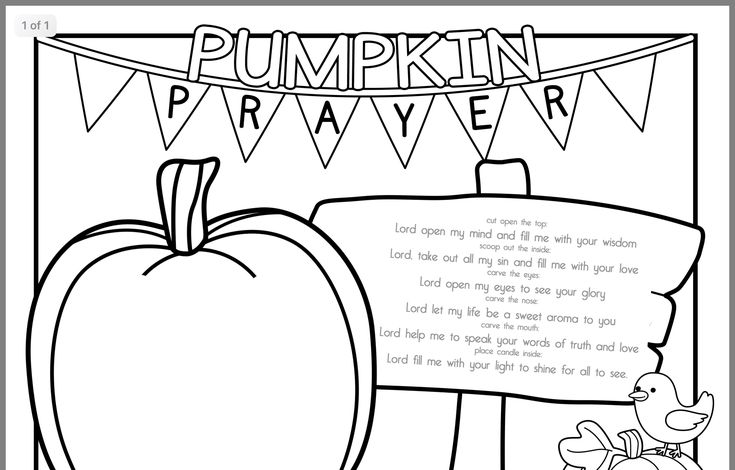
It was these people: young, energetic and literate, with advanced pedagogical views, with an active life position, who set an example for their colleagues for many years.
The nursery-garden lived a bright, creative, active life, accepted more and more new pupils. Conferences and meetings were regularly held on the basis of the nursery-garden. Every year, students of the Syktyvkar Pedagogical College No. 2 underwent pedagogical practice. Many high-level public events were shown for students of the Institute for Teacher Development courses.
December 22-25, 1978 on the basis of a nursery-kindergarten, courses were held for heads of preschool institutions of the republic.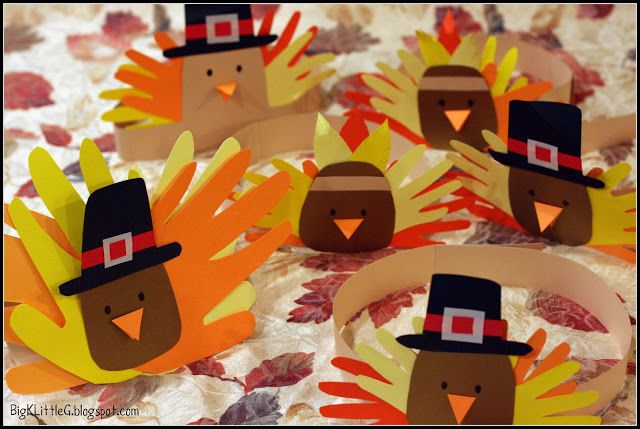
On March 24, 1979, a conference for parents was held on the theme “Labor and Children”. The conference was attended by teachers of Pedagogical School No. 2. They noted the painstakingly prepared work on the part of the teaching staff, children and parents.
On May 17, 1979, courses were held for lecturers – preschool workers in the cities of the Komi ASSR.
June 1, 1979 Mrs. Bowman from Amsterdam (Holland), researcher of the Komi Branch of the USSR Academy of Sciences comrade Roshchevskaya, translator comrade Popova V.G. visited our nursery with a guest visit. At that time, the kindergarten was the base for labor education. In the manual labor room, wooden toys were made, they were engaged in weaving (M.A. Punegova and L.F. Bykovskaya) and embroidery (L.A. Kazanova).
In the guest book, which is still kept in the kindergarten, Mrs. Bowman left an entry: “To all the children and their teachers, I want to say that I really enjoyed visiting the kindergarten. Thanks a lot for all the gifts. I am glad that I can show these souvenirs in Holland. Thank you for the welcome and welcome.”
On June 26-29, 1979, they took courses for nurses-educators of children’s institutions.
In October 1979, republican courses for heads, which were attended by heads of kindergartens in Vorkuta, Ukhta, Inta, Pechory.
On March 1, 1980, a conference for parents of the kindergarten “Dad, Mom, I – a sports family” was held. This conference was devoted to the problems of physical education of preschool children. The conference was attended by representatives of the Ministry of Education of the Komi ASSR, the Syktyvkar city, the Syktyvkar orphanage, pedagogical school No.
In December 1980, a scientific and practical conference was held, which was attended by representatives of the Research Institute of Schools of the MP RSFSR in Moscow, methodologists and representatives of the pedagogical society of the republic.
On May 22, 1980, the kindergarten met the heads of kindergartens in Ukhta.
The kindergarten was repeatedly attended by students of advanced training courses: in May 1980; in January 1981; April 6, 1987 students of the Faculty of advanced training of pediatricians.
On September 23-24, 1981, within the framework of the Republican meeting, the kindergarten was again visited by a delegation of Ukhta in the amount of 25 people.
October 1, 1982, leaving Syktyvkar, mother Kizikevich V.V. wrote a letter of thanks to the kindergarten: “Leaving Syktyvkar, I want to thank everyone who has invested in my child. This is, first of all, Rudy Tamara Anatolyevna. She accompanied us from the junior to the preparatory group.
On April 2, 1983, a conference on mental education was held. An exhibition of children’s works, works of parents, an exhibition of culinary products from stale bread, with recipes for their preparation, were arranged for the conference.
February 1, 1985, the staff of the kindergarten received a letter of thanks: “Dear Raisa Ivanovna! I’m not afraid of words to admire your garden. You and your team have invested a lot of work to create such a cultural center in our city.
On March 12, 1988, a conference was held for parents on the moral upbringing of children.
For many years, kindergarten was considered the base for physical education. We were the first in the republic to start physical education classes on the street. It was 1977. Galina Alekseevna, an energetic teacher Chernykh, began this work. How many difficulties there were with the selection of clothes and shoes, but the educators, together with their parents, overcame these difficulties. Children love the cold season for physical education and sports. This experience was heard at many republican events. The kindergarten worked under the motto: “If you can sit, don’t lie down; if you can stand, don’t sit; if you can run, don’t walk!” The work of Chernykh Galina Alekseevna was continued by an energetic sports worker – Lubova Margarita Vyacheslavovna.
Under the leadership of Raisa Ivanovna Rozova, the kindergarten was awarded the title of “Exemplary Kindergarten”.
From March 1987 to January 1991 Tamara Anatolyevna Rudyy was in charge of the kindergarten. Having worked in a kindergarten for many years, she knew firsthand the work of a teacher, loved her profession and was devoted to her with all her heart.
From March 1991 to February 1992 Emilia Anatolyevna Potapova directed the kindergarten.
Sidorova G.N.
October 1, 1991 our kindergarten was transferred to the balance of Gorono.
From April 1994 to January 2009, the kindergarten worked under the direction of Galina Nikolaevna Sidorova. From the first days, she began to enjoy respect and authority in the team and among her parents. She gave all her strength to work, skillfully managed the kindergarten.
Since 1999, physical education and health work with children has become an officially documented priority in the activities of the kindergarten.
The search for the effectiveness of measures aimed at recovery is of paramount importance. The teaching staff developed and implemented recreational activities aimed at improving the health of children, reducing morbidity, creating a need for a healthy lifestyle, rational organization of the daily routine, stimulating optimal physical activity, and creating a reasonable hardening system.
Since January 2009, the kindergarten has been headed by Svetlana Pavlovna Kosareva, a young, energetic and proactive leader who boldly introduces new technologies. Under the leadership of Svetlana Pavlovna, the kindergarten operates in a mode of effective development, where at every step one feels care for the child, his health and a happy future.
Since January 1, 2011, the kindergarten has become an autonomous institution, and these are new opportunities and prospects for the effective functioning of the institution.
Kindergarten has always been famous and proud of those people who gave their whole soul and give their all to the cause in raising kids. Very kind, caring, child-loving educators, teachers over the years have worked and are working in the kindergarten: Chernykh Galina Alekseevna, Timusheva Valentina Alekseevna, Kristofor Galina Davydovna, Evroshyna Irina Vladimirovna, Pyankova Tamara Leonidovna, Lukoyanova Roza Ivanovna, Bykovskaya Lyudmila Fedorovna, Lubova Margarita Vyacheslavovna, Porubova Maria Egorovna, Pasynkova Natalya Aleksandrovna, Ogibina Galina Nikolaevna, Sharapova Tamara Sergeevna, Kozlova Elizaveta Panteleimonovna – the senior educator, enjoyed great respect and well-deserved authority.
Music directors: Reish Maya Valentinovna and Porubova Irina Petrovna, Markina Maria Borisovna, Perminova Galina Vasilievna, Punegova Natalia Nikolaevna are gifted, creative, talented teachers. How many bright unforgettable holidays with children they have spent and are taking part in artistic and aesthetic competitions.
The first assistant to the teacher, just nannies, people of the kindest soul: Pyatkova Albina Petrovna, Yurkina Nina and others. For more than a dozen years they have been working and are working, taking care of the kids. It was easy and harmonious for teachers to work with such assistants. They thoroughly knew their business, maintained cleanliness and order in their group.
Kitchen plays an important role in kindergarten. For many years, people have worked and are working here with a soul, preparing and preparing delicious food for children: Podorova Maria Evgenievna, Bayazitova Rimma Amvarovna, Chelpanova R.P.
In the kindergarten there is such an inconspicuous, but at the same time necessary position – a housekeeper. Vasilchenko V.M. worked in this position in different years. and Isakova Galina Mikhailovna works. Galina Mikhailovna is the best fashion designer of our time, with her “golden” hands a modern collection of costumes for various events has been created. She is a master of her craft.
Kindergarten medical workers, they have always been entrusted with a special role in maintaining and strengthening the health of pupils. And the merit in this is our medical workers who worked for decades in different years: Popova Valentina Nikolaevna, Shestakova Tamara Stepanovna, Kuratova Tatyana Vasilievna.
Supervisors and storekeepers are those people who monitored the state of the material and technical base of the preschool institution: Bukreeva Svetlana A.







 V., Orlova A.V., Liguta N.V., Prokopenko A.A. – Participants of the city competition “Teacher of the Year”.
V., Orlova A.V., Liguta N.V., Prokopenko A.A. – Participants of the city competition “Teacher of the Year”.  She always had
She always had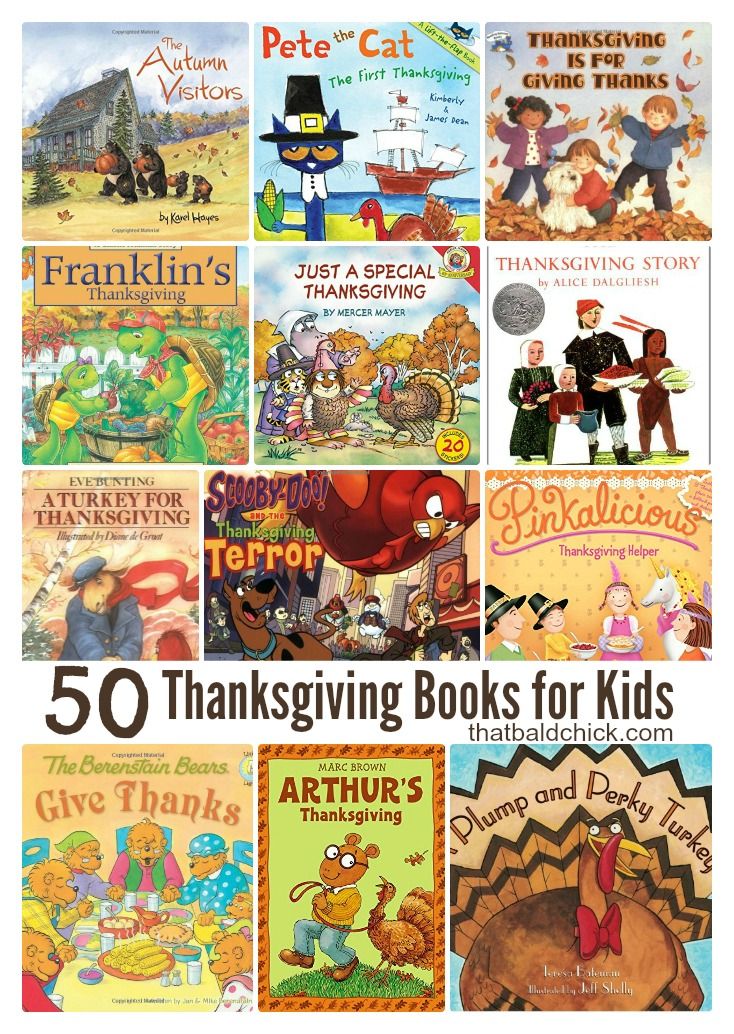 Bright personality, creative, proactive.
Bright personality, creative, proactive. This is a teacher
This is a teacher